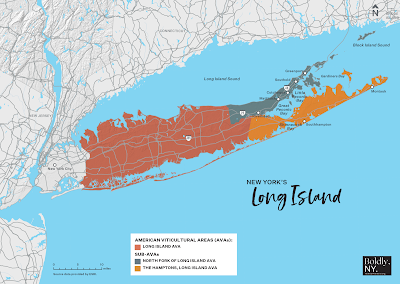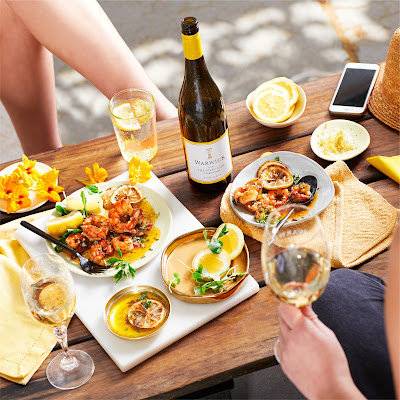Sunday 27 February 2022
Four Dinner Party Wines from Hill-Smith Family Vineyards
Saturday 19 February 2022
Easter Wines from Virgin - The New World
Friday 18 February 2022
Bordeaux Wines With Chinese New Year Foods
Sunday 13 February 2022
Journey’s End Spekboom Sauvignon Blanc 2021
A new Sauvignon Blanc from South Africa's Journey's End
Saturday 12 February 2022
Two South African Wines from The Co-op
Friday 11 February 2022
New York State of Wine: The Cabernet Franc-Off
I'm from the Empire State
- Empire State of Mind: Jay-Z ft Alicia Keys (2009)
Part two of a series of tastings, pitting varietal wines from New York State against classics from the rest of the world.
The first NY State tasting of Rieslings from the Finger Lakes was enough to put New York wines properly on my radar.
The three Rieslings from New York State more than held their own against examples from Western Australia, Alsace and Rheinhessen.
Think of US wines and mostly what we see in this country is warm-climate, fruit-forward Cali-juice. But with pretty much all US states making wine, the potential for variety and nuance is much greater.
The wines here were from two sub-regions within the state:
Finger Lakes: on the same latitude as Spain, but without the moderating effects of the Gulf Stream, it has a cold winter and short, hot summer. Large diurnal temperature variation preserves acidity and vintage variation is significant.
Cabernet Franc
Cabernet Franc is something of an ancient grape with a new look; its origins are uncertain, but the general consensus is Atlantic France, where it is still grown in the Loire, Bordeaux and further south.
It is a parent of both Cabernet Sauvignon and Merlot, but sits somewhere between the two in flavour profile. It does well in cooler climates, but also preserves freshness and varietal character in the heat.
Dark and juicy, you might say that it has the freshness of a white wine yet with the colour and fruit flavours of a red.
Deeper dive: Finger Lakes
The wines
Lamoreaux Landing – T23 Cabernet Franc 2020, FINGER LAKES (£19.99, Daniel Lambert Wines)
Fruited and elegant
juicy and berry-fruited with herbal notes, savouriness and come coffee grounds; fresh, elegant and harmonious; concentrated and long.
Very Good.
Couly Dutheil, Clos de L’Echo 2018, CHINON, LOIRE, FRANCE (not currently available in the UK)
15.5% monster from the Loire
baked, jammy fruit aromas with pine leaves, dried herbs and raspberry leaves; inky, viscous and concentrated with stewed, jammy berry fruits pepper and roasted spices; just about retains freshness. More solidly impressive than juicily enjoyable.
Good.
Element Winery, Cabernet Franc 2014, FINGER LAKES (not currently available in the UK)
Mature, savoury and slightly dried-out
complex and evolved with dried red berries, mushrooms, old leather and earthy sous bois; fresh and supple with sweet, ripe rosehip, licorice and bruised apple fruit
Good.
Zuccardi, Apelación Cabernet Franc 2018, UCO VALLEY, ARGENTINA (£17.75, The Oxford Wine Company, The Vineking, Wimbledon Wine Cellars, The Wine Reserve)
Spiced blueberry pie
aromatic berries and raspberry leaf with nutmeg and cinnamon; plush yet fresh with gentle tannins; supple and long.
Good.
Journey’s End, V5 Cabernet Franc 2019, STELLENBOSCH, SOUTH AFRICA (£15.50, Tanners)
Savoury and scrubby
savoury, scrubby fynbos nose with roasted spices; fresh and juicy with berry fruits, spices, coffee grounds and fine tannins.
Very Good.
RG|NY, RG|NY Cabernet Franc 2019, NORTH FORK, LONG ISLAND (not currently available in the UK)
spiced cherries and cream
herbal raspberry leaf, fresh red berries - juicy raspberries, strawberries and cranberries - with sweet spices; creamy, fresh and concentrated; elegant savoury and long with fine tannins and a dense, muscular core.
Very Good.
Other reviews:
Tom Cannavan: Franc from New York vs The Rest - wine-pages
























